When it comes to alien visitations the Earth must have a huge “Kick Me” sign posted on its backside because even peaceful aliens like Klaatu from The Day the Earth Stood Still brought along threats of violence when he stopped by for a visit, but in 1956 special effects maestro Ray Harryhausen took up the mantle dropped by George Pal and his adaptation of War of the Worlds and give his own spin on things while also cashing in on the “flying saucer” craze that was sweeping the nation at the time, the result of this was the sci-fi classic Earth vs. The Flying Saucers.
The genesis of what would become Earth vs. The Flying Saucers began when producer Charles H. Schneer brought a clipping of a UFO sighting to his longtime collaborator Ray Harryhausen and posited the simple question “Would this make for a good movie?” Clearly, the answer was yes, and soon stop-motion animator and special effects wizard Harryhausen would be filling the skies of Washington D.C with a fleet of flying saucers. The plot is what would become the standard for alien vision stories with a group of plucky heroes banding together to figure out a way to defeat a scientifically advanced enemy but with Earth vs. The Flying Saucer, it was a rather small band consisting of scientist Dr. Russell Marvin (Hugh Marlowe) and his new bride Carol (Joan Taylor) and a couple of characters they meet along the way. It is the character of Dr. Russell Marvin who first catches the eye of the alien invaders because he oversaw something called Project Skyhook, an American space program that was launching monitoring satellites into orbit, and it was his involvement that had them make first contact with him.
“Honey, why don’t you pull over and let them pass?”
Due to a communication breakdown, the aliens had not properly taken into account something called “Time Dilation” and thus their broadcast to Russell only came across as a loud hum, and this resulted in their supposedly announced arrival at Project Skyhook to be met with gunfire from the military. Now, normally this would be considered a case of the gun-happy military firing first and asking questions never but as it is later revealed that aliens had fled their own dying solar system in hopes of setting up shop on good ole Earth, whether the current inhabitants like it or not, that we would be engaged in a shooting war was a foregone conclusion. One of the more interesting aspects of Earth vs. The Flying Saucers is the fact that the aliens want peaceful dialogue with humanity only to prevent them from having to rule over a shattered and unruly planet. Basically, their attitude was “Please surrender to us so we don’t have to ruin the place as this would be an inconvenience.” These beings aren’t the stern aliens from The Day the Earth Stood Still, who wanted to warn humanity about the dangers of fooling around with atomic weapons, these aliens are more like unwanted house guests who will most likely eat you out of house and home, and possibly vaporize the cat.
“Nice planet you have here, shame if anything were to happen to it.”
Unlike the alien invaders found in the H.G. Wells classic The War of the Worlds these beings from another world, though weak and frail, were not going to keel over and die because of the common cold, which is why the heroic Dr. Russell Marvin must step up and help devise a weapon that can take down these hostile visitors. From the observations made by him and his fellow scientists, Marvin develops a counter-weapon against these flying saucers, a weapon that somehow negates the anti-gravity field that keeps the saucers aloft, and before you can say “Independence Day” the alien ships are falling into the Potomac and crashing into national monuments. It’s these scenes of mankind fighting back against the alien invaders that make this one of the more memorable entries in the genre, but what is interesting here is that most of the classic scenes of destruction in this movie are not due to the aliens attacking, instead, it's of them crashing out of control and dying.
Note: The destruction of national monuments in this film set up the formula of such alien destruction that would become a staple of the genre.
Stray Observations:
• Dr. Russell Marvin states he has “A date with a three-stage rocket” but the rockets in these launch scenes are clearly single-stage Viking and V2 rockets and are also not capable of launching satellites into orbit.
• Russell tells the General that they can’t postpone the launch because they are on a tight schedule but I’m sure information like “All your previously launched satellites have been destroyed” would have maybe altered that decision so the General is a bit of an idiot for not speaking up.
• When an outpost observer calls in that a flying saucer is approaching he is laughed off by the air control tower officer, but any craft violating military airspace would not be laughed at no matter what it looked like.
• You would think an advanced race of space travelling aliens would have worked out the bugs of “time differentials” before trying to communicate with the people of Earth.
• The military doubt that Russell and Carol actually saw flying saucers despite the fact that saucers have been seen flying at low altitudes over several major cities in broad daylight and causing public hysteria.
• The scene where they use the corpse of a dead alien to understand its technology is a direct lift from George Pal’s War of the Worlds.
"Please ignore our goofy spacesuits and focus on our cool flying saucers."
It’s clear that Ray Harryhausen and his flying saucers were the stars of this movie, with the great animator bringing personality and life to these whirring alien craft, but this is, even more, the case when you consider the fact that production cast Hugh Marlowe as the film’s protagonist, a man who is the acting equivalent of dry white toast. Marlowe has appeared in a couple of other notable science fiction movies over the years, such as the aforementioned The Day the Earth Stood Still and the time-travelling adventure World Without End, but his dry and unemotional delivery of dialogue tends to hamstring whatever film he is cast in. Now, in the case of The Day the Earth Stood Still he was playing the dickhead boyfriend of the lead female and thus us not liking him works in the film’s favour, but in this outing, he’s supposed to be the forceful leader who brings people together to combat the alien menace, unfortunately, what we get is a person who couldn’t rally a PTA meeting.
Revel in the vacancy that is Hugh Marlowe.
Setting aside Hugh Marlowe’s rather “non-performance” The Earth vs. The Flying Saucer is a perfect example of the genre being done well, with its cold and unemphatic aliens threatening global destruction, even if it is mostly delivered through the brilliant use of stock footage, and those wonderfully designed saucers had more character and personality than many a Hollywood villain and certainly more than poor Hugh Marlowe, and even though Ray Harryhausen himself wasn’t a big fan of this film, stating in his biography that this was the least favourite of his films, it’s still a fun and exciting example of the genre and well worth checking out.
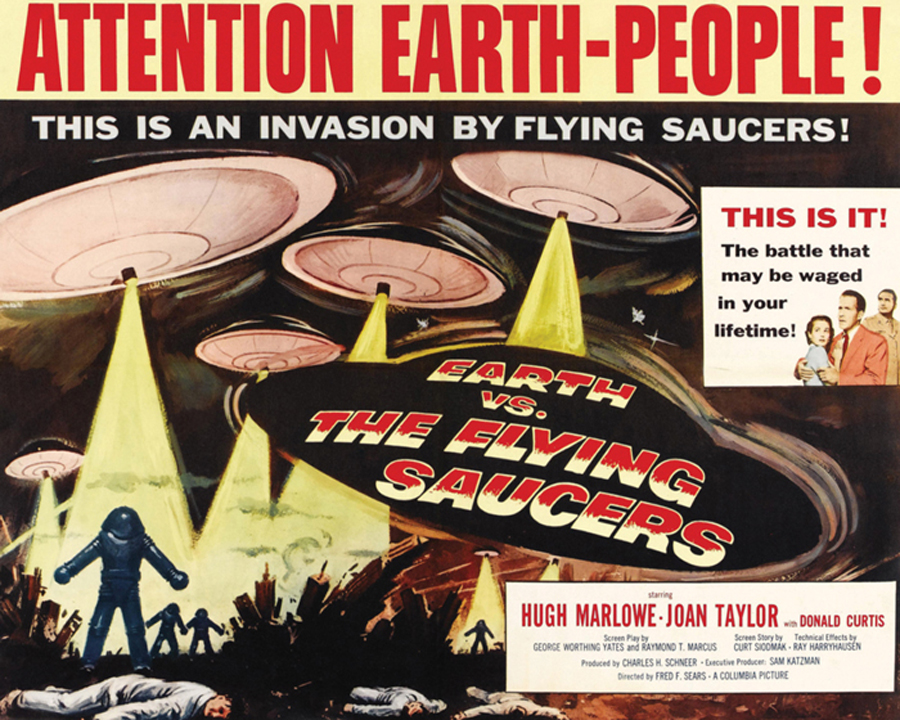
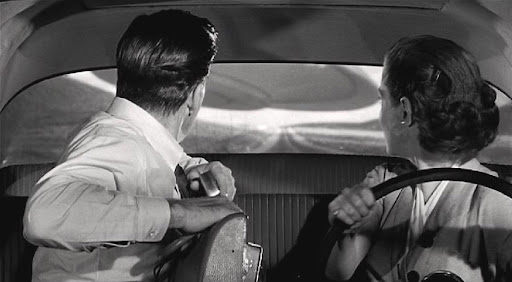
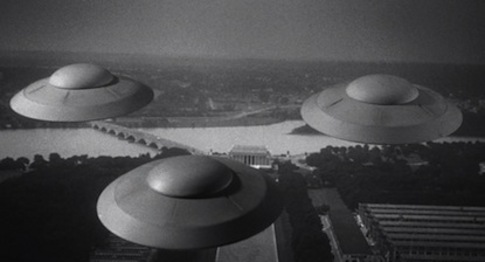
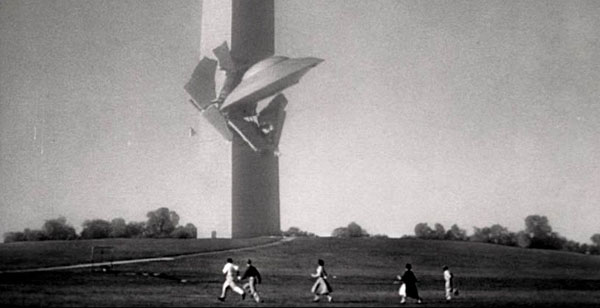

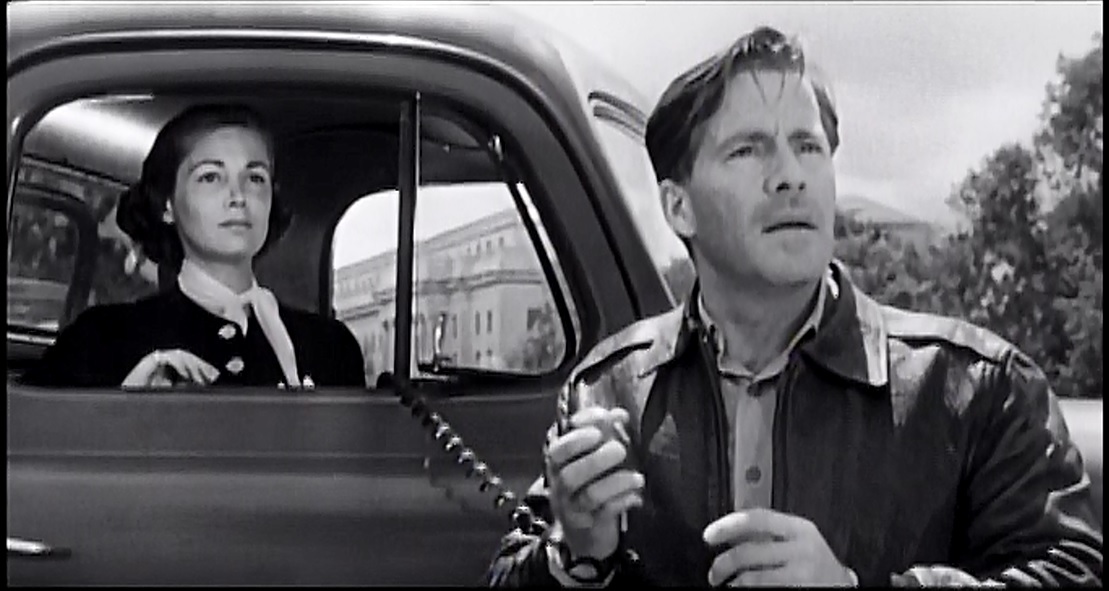

No comments:
Post a Comment